Helen Hunt, 60, Stuns During Her Latest Appearance, and Her Lips Become the Center of Attention

BOOM! It was an epic space explosion that made scientists’ hair stand on end when they discovered it in February 2020! Its size and power are enormous even by cosmic standards...
We set our destination to a group of galaxies in the Giraffe Constellation. If our rockets could fly at the speed of light — as fast as it takes the light from the bulb in your lamp to reach your eye when you switch it on (zoom, instant!) — it’d take 2.6 BILLION years to get to where this explosion occurred in space.
2.6 billion years. A lot’s happened in that time here on Earth. That long ago, dinosaurs weren’t even around yet! Primordial life was just leaving the ocean and heading on land!
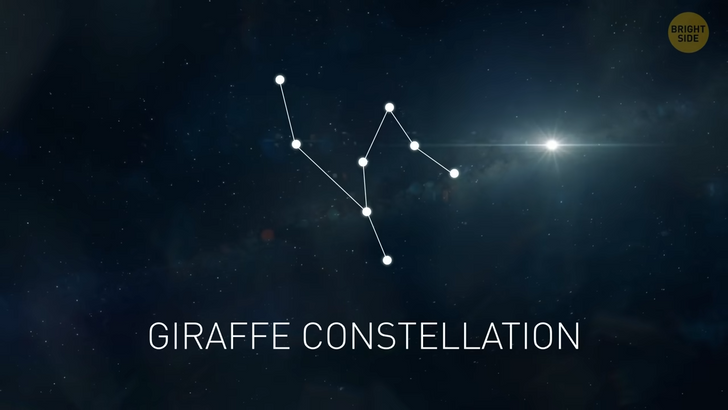
Well, we’re traveling faster than the speed of light, and we reach our destination. Ground zero for a boom so big, it’d be like 600 million Suns exploding simultaneously! And our Sun is massive to begin with — it could fit one million Earths inside!
In fact, 99.8% of the stuff that makes up our entire solar system is the Sun alone. The remaining 0.2% is all the planets, moons, asteroids, and other random cosmic bodies floating around our star. And here’s the real kicker: this burst lasted 100 million years! That’s from today’s digital world with smartphones and self-driving cars all the way back to dinosaur times!
So what set off this space boom of epic proportions? A black hole, what else! This monster swallowed so much substance that it choked and shot out a bunch of plasma beams. They cut through space and formed a cosmic wasteland all around the site! It was thought to be the biggest explosion in the universe. But sooner or later, every record gets broken!
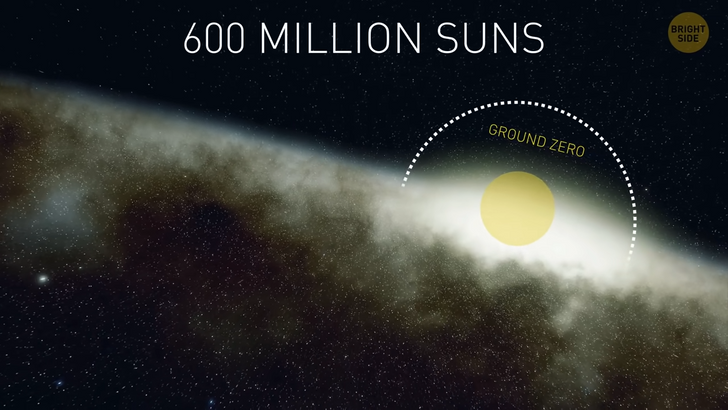
We head to another galaxy cluster. This one dubbed Ophiuchus (off-ee-YOO-kuhs). An explosion thundered in it 5x more powerful than the one in the Giraffe! It was so big, you could easily line 15 Milky Ways across its blast area! Mind you, our galaxy is over 100,000 light-years across and home to 200 billion stars. “WHOA!” is right!
It was the largest space blast since the Big Bang that started it all 13.8 billion years ago. So what was the source of this blast? To answer that, we’ll need a simple analogy! Just like on Earth, space sort of has its own megacities. These New Yorks and Tokyos of the cosmos are massive. And that word doesn’t even do it justice. But I tried!
They’re officially called superclusters of galaxies. At the center of the most mega-huge ones, you’ll find a supermassive black hole. Now, scientists still don’t know much about them. But the theory goes that they’re essentially a whole bunch of stuff or “matter” that gets squeezed into a teeny tiny point that can’t even be measured because it’s infinitely small. Yeah, complicated stuff!
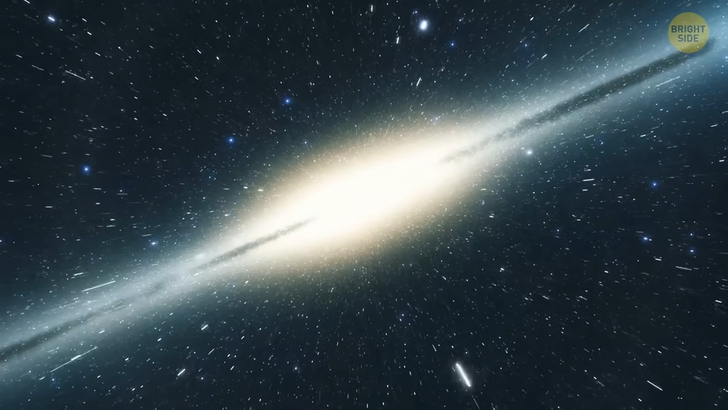
Think of it this way: it’d be like taking the entire Earth and shrinking it down to the size of a grain of rice. That grain of rice would still weigh the same as the planet! All that stuff would just be really squished together. So, more “matter” equals more gravity. Meaning, a black hole’s pull is inescapably strong. Not even light can get past it! Hence, the whole “black” part of its name.
Funny thing is, we can’t even see them with our eyes! Black holes don’t glow or reflect light, just swallow it up like spaghetti! Yum! Makes me hungry just thinking about it. But back to epic space things that go boom. A supermassive black hole exploded in this Ophiuchus supercluster of galaxies.
This monster stopped pulling in everything around it like black holes usually do. Quite the opposite — it started spewing stuff out! A colossal stream of plasma ripped through space almost at the speed of light and broke through a bubble 1.5 million light-years across! Every thousandth of a second, it was like 20 billion megatons of TNT went off! And it continued doing that for 240 million years!
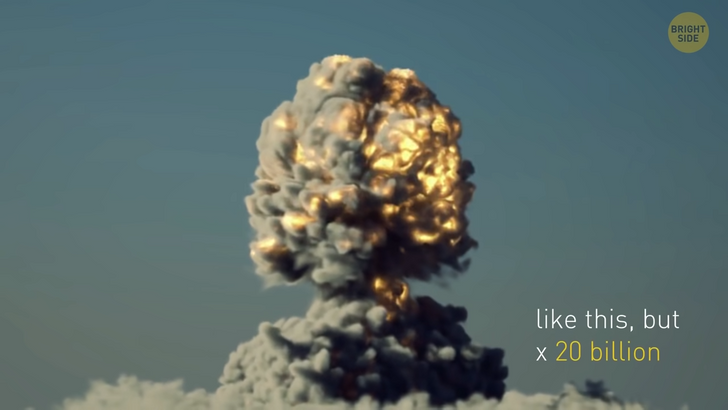
But now I draw your attention to the heavyweight of the Milky Way! It’s the toughest guy in the galaxy: a supermassive black hole called Sagittarius A* (“A-Star”).
The mass of this beast is 4 million times that of the Sun. And you’ll like this: it’s only 25,000 light-years from our home planet! In space terms, this thing is pretty much like our neighbor two houses down the street!
Wait, don’t worry! No need to pack up and move! Our neighbor has given up his old business of shooting hot jets into space. But in 2019, he did make astronomers’ hearts skip a beat!
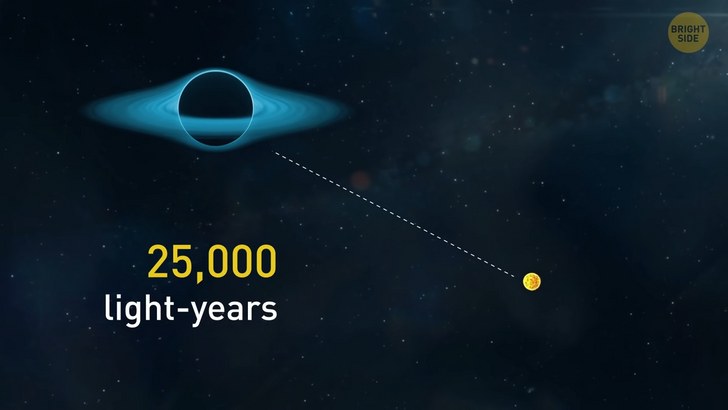
Near this Sagittarius A* star, they noticed a flash that was 75x higher than normal. Their theories: #1 the hole swallowed up part of a star that found itself wondering way too close for comfort! Or #2 a gas cloud crashed into it. After a 14-hour spike in activity, Sagittarius A* star finally calmed down.
Phew! But in the past, this giant was quick-tempered and knew how to light space up! 3.5 million years ago, our very ancient ancestors (as in, they weren’t technically human yet) were already walking across Africa. Innocently unaware of a cataclysm happening far off in the sky above them...
It looked like a beacon that suddenly turned on and shot out two cone-shaped beams. The whole thing was triggered by a hydrogen cloud 100,000 times more massive than the Sun. It came too close, and Sagittarius A* star reacted!

Those jets of plasma cut through space for 200,000 light-years. They didn’t stop for another 300,000 years! That’s the snap of a finger on the cosmic scale, but astronomers still find traces of that boom even today. Neutron stars also know how to set off some fierce fireworks! They appear after giant stars run out of fuel and collapse in on themselves.
Imagine the entire Sun getting squished down into the size of a small city. Yep, that makes neutron stars incredibly dense and heavy. One teaspoon of their matter weighs around 10 million tons! They spin extremely fast — hundreds of full rotations a second! And for some of them, they shoot out energy beams from the poles, making it look like a cosmic lighthouse!
One of the most interesting neutron stars is in the constellation Sagittarius. Like black holes, it has powerful gravity and pulls in tons of matter. This all collects in a massive rotating disk. This particular one was powered by hydrogen from a nearby star. It gulped up its neighbor, taking in so much matter that it started heating up. The result: a gigantic fireball launched from its surface!
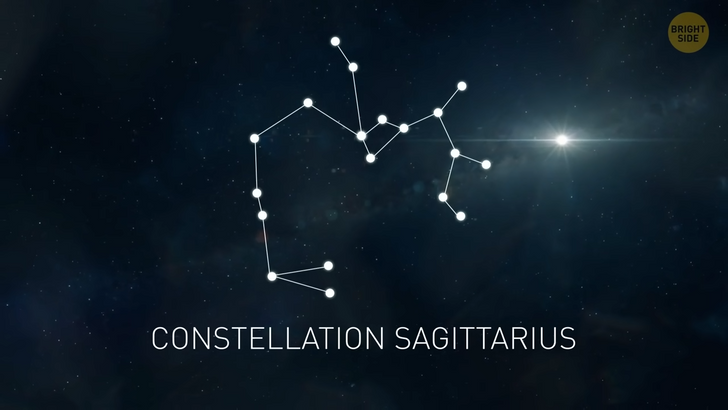
Astronomers witnessed this on August 20, 2019. They saw a 20-second flash that lit up space. It was the brightest burst NASA has ever seen. The star spent more energy on it than the sun produces in over a week! But, of course, nothing beats the biggest boom of them all: the one that brought life to our entire universe according to the most popular theory. But first, a little backstory...
Scientists say only 5% of the Universe is stars, planets, asteroids, comets, dust clouds, you, me, your chinchilla, all life, basically all the stuff you can see with your own eyes! So, what can the remaining 95% be? The mysterious and dubious-sounding dark energy and dark matter.
In simple terms, they’re like the yin and yang of space. Dark matter makes things attract to each other with gravity — it’s the glue of our universe keeping everything together. Dark energy does the opposite: it makes things repel and grow further apart. So the theory goes.
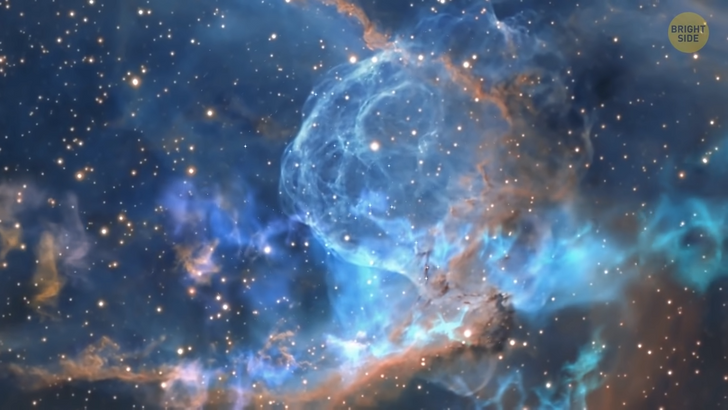
And weirdly enough, dark energy makes things grow further apart the farther they are from each other! Scientists can even see this for themselves! The more distant a galaxy is, the more quickly it’s moving away from Earth.
But those two forces weren’t always around. In fact, about 13.8 billion years ago, there wasn’t anything around. Everything was condensed into a teeny tiny dot that’s infinitely small.
Sound familiar? Yep, this mysterious “forever shrinking point” is also in the center of black holes, and it’s called a singularity. It’s where all our fancy science and math breaks down. It’s the most puzzling thing out there! But one day, that incredibly dense and hot point started to expand in all directions.
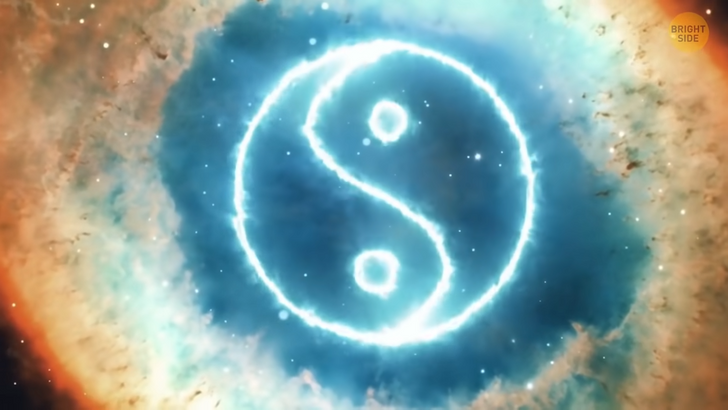
And it grew faster than the speed of light! Doubling its size a hundred times within a fraction of a second! (If you want the specifics, it was a hundredth of a billionth of a trillionth of a trillionth of a second!) Yeah.
The more time passed, the faster and bigger it grew! And it’s been expanding since, like blowing up a balloon that never pops. Scientists called this expansion the Big Bang.











